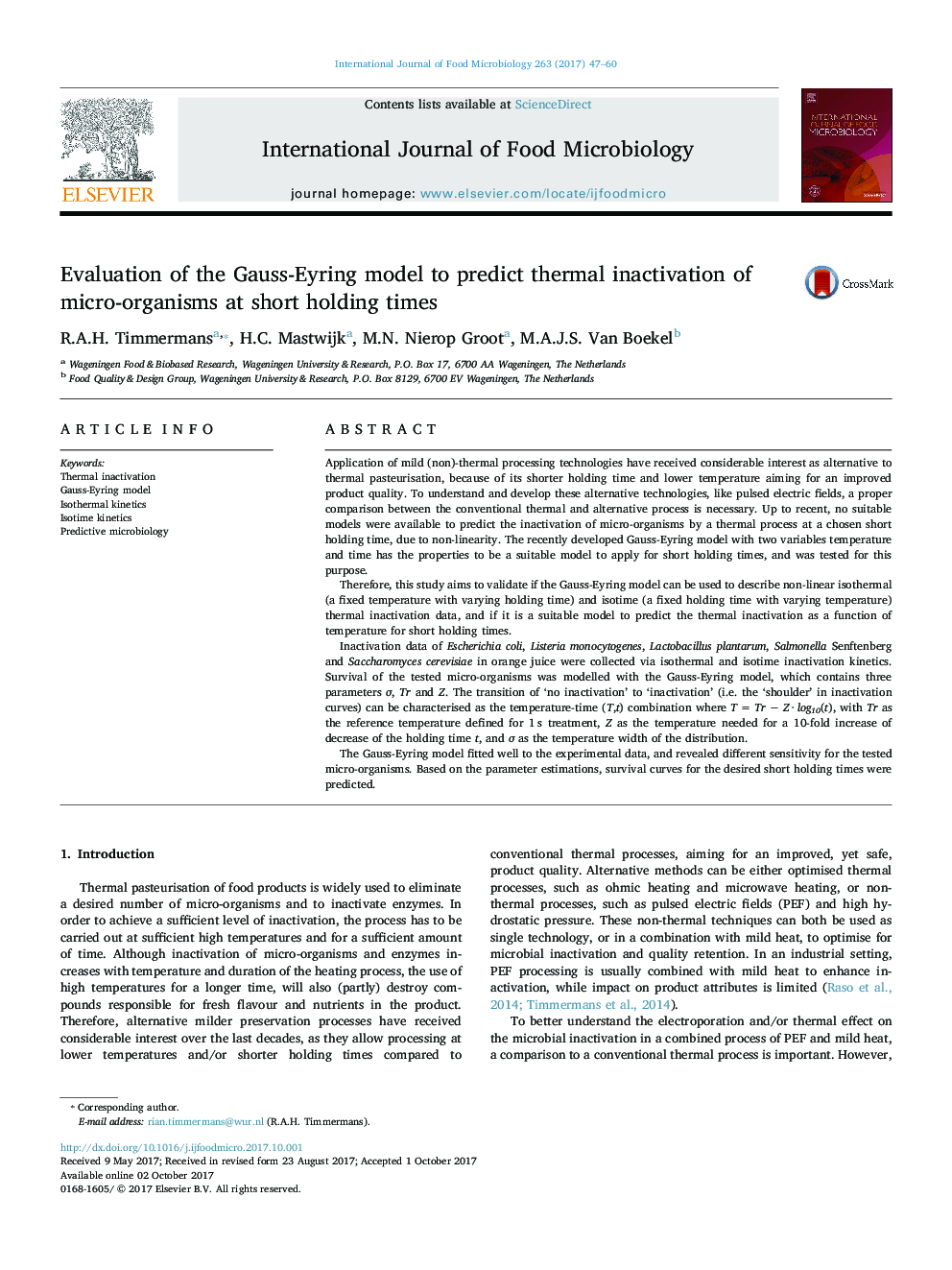| کد مقاله | کد نشریه | سال انتشار | مقاله انگلیسی | نسخه تمام متن |
|---|---|---|---|---|
| 5740563 | 1616520 | 2017 | 14 صفحه PDF | دانلود رایگان |
- The Gauss-Eyring model was evaluated to describe temperature-time inactivation kinetics.
- This model predicts inactivation at short holding times very accurately.
- This model was validated using inactivation kinetics of 5 different species and holds.
Application of mild (non)-thermal processing technologies have received considerable interest as alternative to thermal pasteurisation, because of its shorter holding time and lower temperature aiming for an improved product quality. To understand and develop these alternative technologies, like pulsed electric fields, a proper comparison between the conventional thermal and alternative process is necessary. Up to recent, no suitable models were available to predict the inactivation of micro-organisms by a thermal process at a chosen short holding time, due to non-linearity. The recently developed Gauss-Eyring model with two variables temperature and time has the properties to be a suitable model to apply for short holding times, and was tested for this purpose.Therefore, this study aims to validate if the Gauss-Eyring model can be used to describe non-linear isothermal (a fixed temperature with varying holding time) and isotime (a fixed holding time with varying temperature) thermal inactivation data, and if it is a suitable model to predict the thermal inactivation as a function of temperature for short holding times.Inactivation data of Escherichia coli, Listeria monocytogenes, Lactobacillus plantarum, Salmonella Senftenberg and Saccharomyces cerevisiae in orange juice were collected via isothermal and isotime inactivation kinetics. Survival of the tested micro-organisms was modelled with the Gauss-Eyring model, which contains three parameters Ï, Tr and Z. The transition of 'no inactivation' to 'inactivation' (i.e. the 'shoulder' in inactivation curves) can be characterised as the temperature-time (T,t) combination where T = Tr â Z · log10(t), with Tr as the reference temperature defined for 1 s treatment, Z as the temperature needed for a 10-fold increase of decrease of the holding time t, and Ï as the temperature width of the distribution.The Gauss-Eyring model fitted well to the experimental data, and revealed different sensitivity for the tested micro-organisms. Based on the parameter estimations, survival curves for the desired short holding times were predicted.
Journal: International Journal of Food Microbiology - Volume 263, 18 December 2017, Pages 47-60
